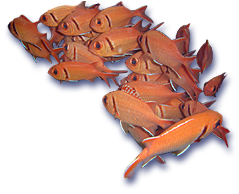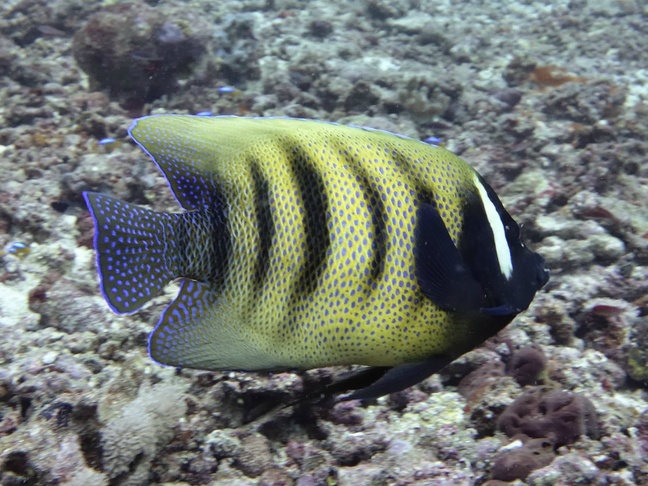




 Add to own gallery
Add to own gallery

Link to description on WikipediA
The adult Sixbar angelfish has a yellowish body with five vertical black bars on the side and one white bar behind each eye. It can reach up to 46 cm in length. In the juvenile phase it has a black body with vertical white bars. Male and female are indistinguishable in color from each other. They occur singly or in pairs and can usually be found in lagoons with rich coral growth, on reef faces and on reef slopes. These fish are often hanging out near cleaning stations of Bluestreak cleaner wrasses (Labroides dimidiatus). They are found at depths from 3 to 50 meters. When approached the Sixbar angelfish are known to grunt in warning. The main food contains fish eggs, sponges, worms and mollusks.
Bluestone kambingan, Six barred angel, Six-banded angelfish, Sixband angelfish.